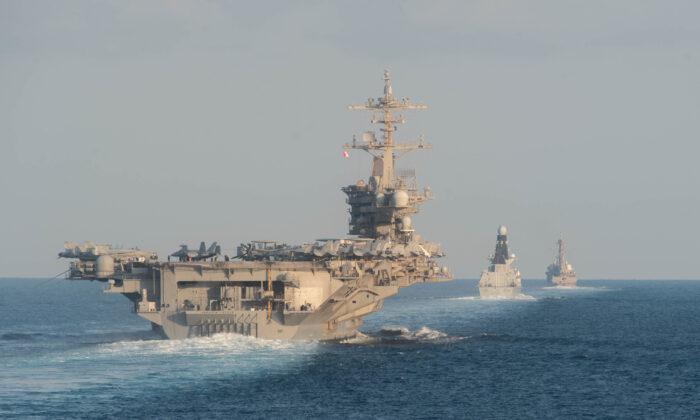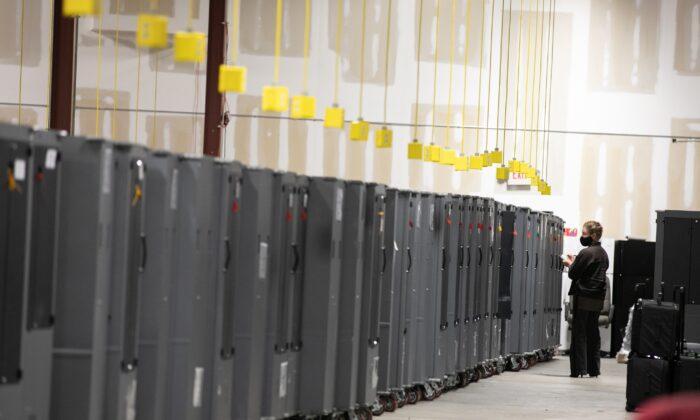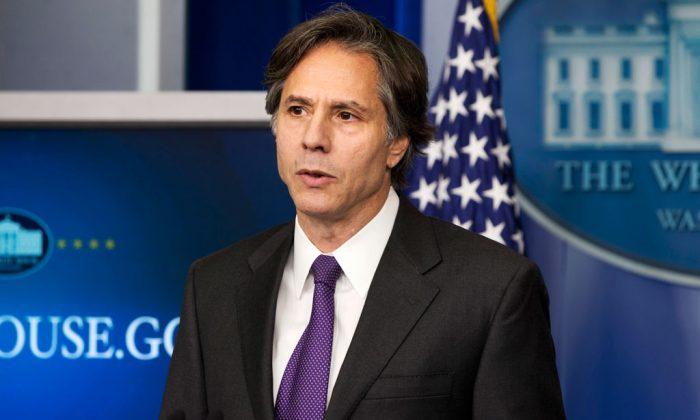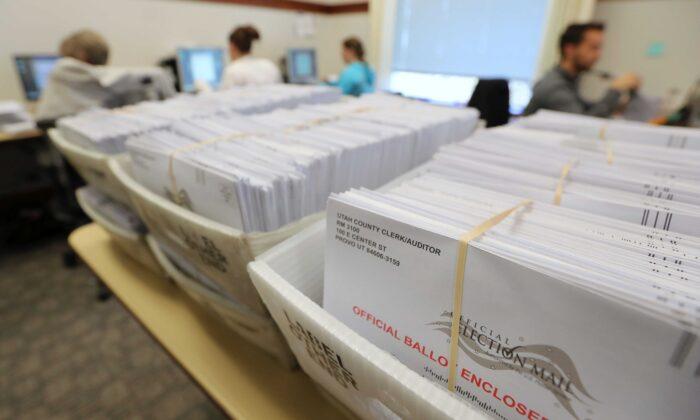Commentary
Iranian regime leaders love to boast. They have been claiming for years now that they will “wipe Israel off the map” and “destroy America.”
Gen. Hossein Salami, commander of the Islamic Revolutionary Guards Corps (IRGC), recently warned Israel, Saudi Arabia, and the United States not to move against Iran.
“If you cross our red lines, we will destroy you,”
he said. “If Iran decides to respond, the enemy will not have security anywhere. Our patience has a limit.”
Salami was responding to the recent protests in Iran that have rocked the country over gasoline price hikes, erupting in all major cities and hundreds of smaller municipalities. The regime cut off internet access for a week so regime snipers could kill in darkness, gunning down more than 100 protesters.
Iran predictably blamed outside powers for the protests, a claim perhaps unwittingly buttressed by an unusual public statement from Secretary of State Mike Pompeo on Nov. 26.
The United States had received “nearly 20,000 messages, videos, pictures, notes of the regime’s abuses through the Telegram messaging system,”
Pompeo said, “... and will continue to stand with you in your struggle for a brighter future.”
The Iranian regime, for all its thuggish tactics, has proven itself incapable of putting a lid on domestic protests and anti-Iran protests that have spilled over into Iraq and Lebanon, two countries Iran has dominated for many years. And this is its
Achilles heel.
But Iran’s military continues to display a long reach, allegedly demonstrating in September that it could launch a sophisticated drone and cruise missile attack on Saudi Arabia, where it did serious damage to the world’s largest petrochemical facility at Abqaiq.
Similarly, Iran’s intelligence apparatus has shown that it can hunt down dissidents who threaten to expose the regime’s dark secrets, in particular the stupendous corruption of the revolutionary leadership.
In October, the regime announced it had captured prominent dissident journalist Ruhollah Zam by
luring him to Iraq and then taking him to Iran, where they forced him to make a videotaped “confession.” And in November, an apparent regime assassin gunned down
Massoud Molavi, a former Defense Ministry cyber contractor, as he was walking down a street in Istanbul.
Molavi’s crime? He was revealing regime corruption for all the world to see on a Telegram channel known as “Black Box.”
So between bluff and reality, where do we stand with Iran?
Watch the Persian Gulf
Iran’s clerical and military leaders love to threaten the United States to stay out of the Persian Gulf. And for many months, after Iran shot down a U.S. drone earlier this year and U.S. President Donald Trump called off a retaliatory strike, U.S. aircraft carriers stayed in the Sea of Oman and the Arabian Sea.Trump’s detractors have said his failure to retaliate and his pullback of U.S. troops from the Syria–Turkey border have made the United States look weak. Iran’s leaders haven’t made the same mistake.
On Nov. 19, without a peep from Iran, the U.S.S. Abraham Lincoln steamed with its carrier battle group through the Strait of Hormuz into the Persian Gulf, where it has been carrying out military operations and conducting surveillance on Iran ever since. The U.S. Navy
called the transit through the strait as “safe and professional.”
Once the Iranians began to stare at 80,000 tons of diplomacy, they blinked.
Keep an eye on long-bruited
naval war games in the Gulf between Iran, Russia, and China. If those exercises take place while the U.S.S. Abraham Lincoln remains on station inside the Gulf, it will signal a dramatic military escalation. If the Iranians, Russians, and Chinese hit the pause button, know that U.S. deterrence still works.
Watch Syria
Israel and Iran have clashed repeatedly in Syria, but mostly from a distance. On Nov. 20, Israel launched wide-scale strikes on Iranian Quds Force and Syrian Armed Forces targets near Damascus in retaliation for rockets fired into Israel the previous evening.
A senior Israeli security official
told the BBC that Israel meant to signal they were “changing the rules,” and that even a small attack from Syria would trigger an extensive response.
Following the Israeli counterstrikes, U.S. Gen. Mark Milley, chairman of the Joint Chiefs of Staff
, arrived in Israel for talks with his Israeli counterpart, Lt. Gen. Aviv Kochavi.
Israel and the United States appear to have
stepped up their cooperation in Syria to counter Iran. The United States recently announced it was building two new bases in southeastern Syria, along the Iraq border, with the goal of closing the land bridge opened by Iran to Syria and Lebanon three years earlier.
The thing to watch here is whether the Iranian Quds Force and its local proxies launch attacks on U.S. forces in Syria, or whether they retrench.
Iran has very real military and intelligence capabilities, but faced with a direct challenge from the United States and Israel, Iran generally goes to ground.
Iran’s operations in the Persian Gulf and in Syria over the coming weeks will indicate whether Iran continues to fear U.S. military might and political resolve, or whether it mocks it. Stay tuned.
Kenneth R. Timmerman is a best-selling author, including “ISIS Begins” and “The Election Heist.” He was a member of the national security and foreign policy advisory board of Trump for President and was co-nominated for the Nobel Peace Prize in 2006 with Ambassador John Bolton for his work on Iran.
Views expressed in this article are opinions of the author and do not necessarily reflect the views of The Epoch Times.





